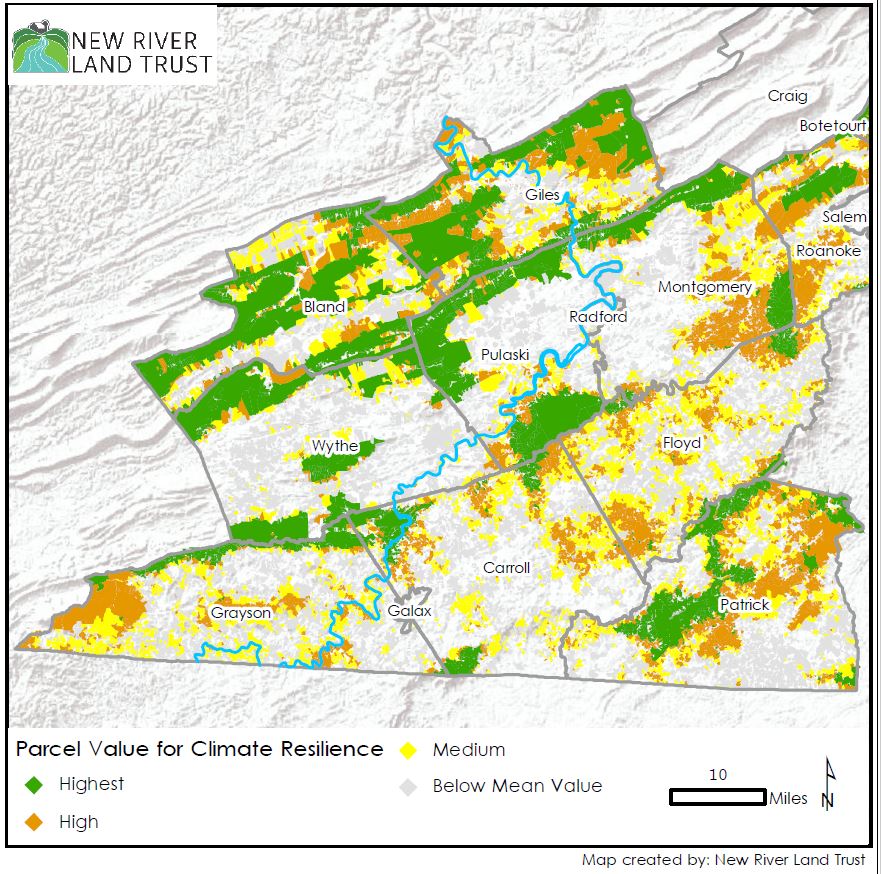Land Conservation Key to Buffering Impacts of Changing Climate
 Climate resilience occurs when characteristics of the land buffer climate disruptions such as gradual increases in temperature, droughts, and more severe and frequent storms. Resilient sites are better able to tolerate these disruptions as well as connect large climate resilient areas – making it possible for wildlife to move and adapt.
Climate resilience occurs when characteristics of the land buffer climate disruptions such as gradual increases in temperature, droughts, and more severe and frequent storms. Resilient sites are better able to tolerate these disruptions as well as connect large climate resilient areas – making it possible for wildlife to move and adapt.
Here in the New River region, we have a unique landscape, but our uniqueness is also our safeguard in a changing climate. We live in one of the few regions of Virginia with extensive areas of land deemed resilient due to our rural and forested character, extensive federally protected lands, variable elevation and topography that create microclimates, and oxygen-rich coldwater streams. Undeveloped, minimally disturbed land can support a range of plants and animals essential to maintaining biodiversity.
The New River Land Trust recognizes the opportunity and need for preservation of these areas where targeted conservation can make a difference in the future. Our robust Geographic Information Systems (GIS) model, tailored for our service area and our conservation priorities, identifies the private lands that are the most important for climate resilience. The resulting maps show us their level of conservation value so we can reach out strategically to individual property owners who may be interested in pursuing conservation options for their land. “It’s remarkable that a single landowner can have a tangible, positive influence on how well a species may adapt to a changing environment,” says Allison Brown, Conservation Coordinator for the New River Land Trust.
Land is essential for ensuring that our ecosystems, and the wildlife and people that depend on them, thrive in a changing climate. The New River Land Trust will be making climate resiliency a priority factor as we pursue future conservation projects.
The post Land Conservation Key to Buffering Impacts of Changing Climate appeared first on New River Land Trust.
